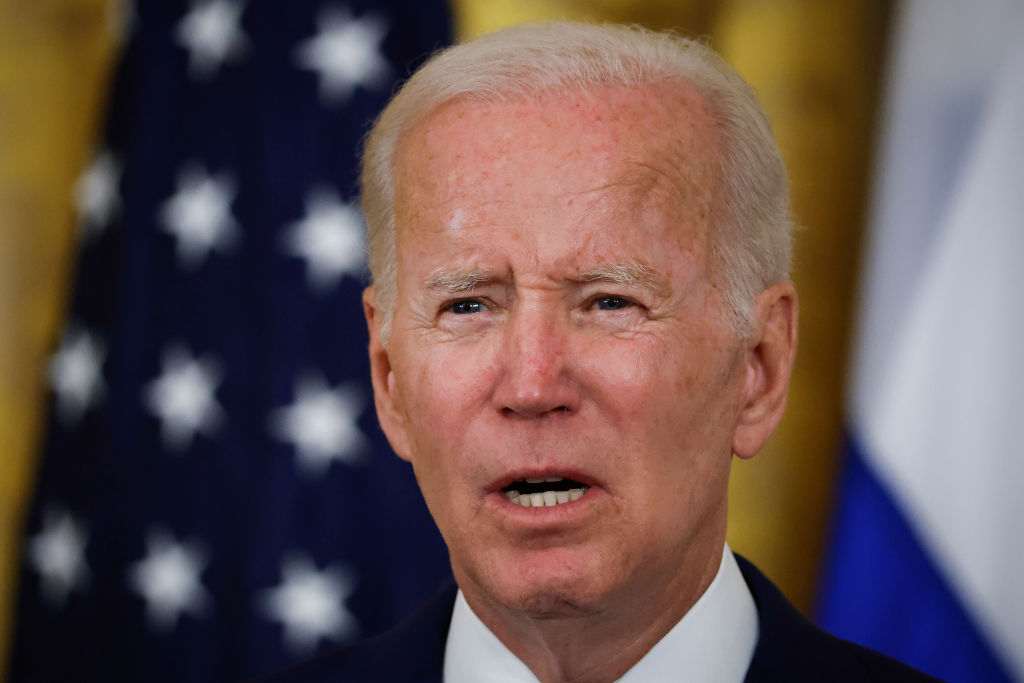With recession fears looming large over the landscape of the 2022 midterms and inflation impacting families across the country, the Senate Appropriations Committee just pumped four billion taxpayer dollars into the Navy’s budget that the Navy never asked for — and much of the excess was never approved by the House Armed Services or Appropriations committee.
As news of the excessive spending breaks, 70% of the American people consider inflation to be “a very big problem” facing the country according to Pew Research, 51% considered the growing deficit to be “a very big problem” as well.
By a wide margin, Americans view inflation as the top problem facing the country today https://t.co/H43TLxkb4S pic.twitter.com/mG3z1Unwce
— Pew Research Center (@pewresearch) May 20, 2022
In the summary of the Senate Appropriations bill, Chairman Patrick Leahy wrote: “This bill modernizes our armed forces to address the evolving threats of the 21st Century, ensuring the Defense Department is able to compete with China and other adversaries across the globe. It includes additional funds to help address the consequences of inflation, which has impacted government programs at every level — both defense and non-defense.”
Republicans such as Sen. Rand Paul of Kentucky have been pointing out the logical flaw in increasing government spending to fight inflation for decades.
“In recent months, prices on nearly everything from gas, food, and clothes to electricity, car prices, and rent, have all increased, and unfortunately it’s only going to get worse,” Paul told Fox Business in January. “Congress needs to realize that further spending at this time of rapidly rising prices is only going to continue the trend of rising prices on this nation’s already vulnerable businesses and families.”
The Navy is required under the Senate bill for fiscal 2023 to use the appropriated funds for the construction of a new destroyer, two amphibious warfare ships, a cargo ship and multiple LCAC air-cushioned landing craft.
However, none of the vessels are anywhere to be found in President Joe Biden’s budget or the “unfunded priorities” of the U.S. Navy that didn’t make it into his budget plan.
So why are they there?
The corresponding House bill does not fund the additional ships either, and the previous National Defense Authorization Act authorizes only parts of the massive spending package. But this is hardly novel.
According to Roll Call, the existing 2022 spending law that covers the nation up until the end of September also contained an excess of $4 billion never requested by the Navy. Wired reported as far back as 2012 that Congress wanted a bigger Navy — though the Navy disagreed. It was another case where the political reality and operational reality seemed to clash with “the moneymen in the House of Representatives thinking the Navy needs more ships to meet the greater burden — something the Navy’s leadership vehemently rejected at a bizarre congressional hearing.”
In 2012 this was happening in the House and in 2022 it seems to be the Senate’s turn.
The 2023 Senate bill provides an overall total of $31.93 billion for building new naval vessels, $27.9 billion of which was actually requested.
In July, Heritage Foundation policy analysis David Ditch, offered his insights into the contradictory nature of increasing spending to reduce inflation.
“Both the Biden administration and congressional Democrats are promoting tired, failed policies: more federal micromanagement, red tape, handouts to political allies, and threats of job-killing tax hikes,” he wrote for The Daily Signal.
“When it comes to inflation, the direction elected officials take regarding federal spending is vitally important. Overspending has been a major factor behind inflation, as Capitol Hill and the Federal Reserve have dumped trillions upon trillions of dollars into the economy and sparked the inflationary fire. Yet, astonishingly enough, there are plans to add even more monetary gasoline,” Ditch said.
Among the ships actually requested by the Navy are two Columbia-Class ballistic missile submarines, two Gerald R. Ford-class aircraft carriers, two Arleigh-Burke-Class destroyers and one Constellation-Class frigate.
This article appeared originally on The Western Journal.

























 Continue with Google
Continue with Google